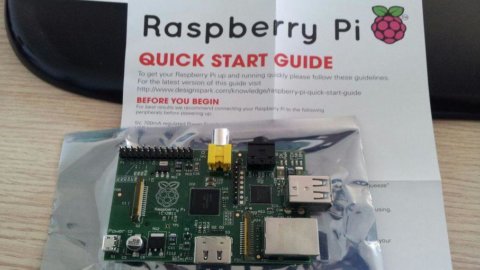It's the computer least e less expensive of the world. It's not a dream, it exists and anyone can buy one. Producers will certainly have no problem selling it since the economic crisis already offers a greater incentive than the best marketing campaign imaginable. Is called Raspberry Pi, but his story begins at least seven years ago.
It was January 28, 2005 when Nicholas Negroponte announced the project at the World Economic Forum in Davos, Switzerland OLPC (One Laptop per Child). It was an initiative aimed at the production and distribution of 100-dollar mini laptops to provide every child in the world, especially those in developing countries, with access to knowledge and modern forms of education.
Negroponte, a genius from the Massachusetts Institute of Technology in Boston, had even thought of a "crank" power supply and an aeration system that involved the Italian patent of the famous "breathing shoes" (Geox). After gaining the attention of the Secretary-General of the United Nations, Kofi Annan, and of the whole World Summit on the Information Society meeting in Tunis, the first working prototype of the "$100 laptop" paved the way for the mass production of minicomputers (July 2007) which, however, in the final version, had batteries and cost around $30 extra.
Today no one talks about the OLPC anymore although it is not yet possible to say whether it was a flop or not. For some months now, however, all the specialized media have focused on a project that has much in common with that of Negroponte, but which has focused on a different target, reducing the costs of the final product by a quarter compared to those of the first OLPC.
The basic idea, had by the British Raspberry Pi foundation, which then gave its name to the device created, is the creation of a super-economic minicomputer, designed to stimulate thebasic computer science education and programming in schools.
The object, which is distributed in two versions, one for the price of dollars 25 and another, more powerful one, at $35, is as big as a pack of cigarettes, but is able to perform most of the functions that a bulkier and more expensive desktop would perform, and at the same time consume less electricity.
The foundation planned to distribute it at the end of February 2012, but it is still very difficult to get hold of this technological jewel without waiting at least a month. The model arrived in the editorial staff of FIRSTonline is version B, that is the one from dollars 35. The first impression is that of having purchased an electronic card whose functioning can only be understood by insiders (not to mention real IT nerds). Yet, just follow the instructions (in English) to realize that you really can't go wrong. The reference site of the project is then full of suggestions and guides for the neophyte who make them stop hesitation, if not for everyone, at least for enthusiasts.
The Raspberry Pi can be connected to both a PC monitor and a TV, as long as both are equipped with an interface HDMI o RCA Videos. The Internet connection must necessarily be provided via cable Ethernet, while keyboard and mouse must be connected via USB port. In addition to the grip microUSB for power supply (a simple universal mobile phone power supply can be used), the Raspberry Pi has a card slot SD Card and an exit stereo audio pin jack type.
The miracle of IT minimalism is completed by software. To do the magic is a particular distribution of Linux called Debian and that it is based only on free software (Open Source). With just a few steps, you can load the operating system onto the SD card and boot everything up to the command line. From here it is then possible to call the LXDE graphical interface (Lightweight X11 Desktop Environment) which allows you to use the micro computer through a familiar window system. The browser for surfing the Internet is Midori, one of the simplest and most streamlined tools for exploring the Internet, already integrated into the system.
But what can you do with the Raspberry Pi other than learning to code in an open source environment or surfing the Internet? You can for example connect an external hard drive, perhaps using a USB port replicator e listen to music in mp3 format or watch movies in high definition. You can write text or edit images, use a remote assistance application or send e-mail messages. Finally you can use VoIP or instant messaging applications, such as Skype.
It is important to know that there is a site that started selling containers specially designed for the Raspberry Pi. By purchasing one, in addition to acquiring undeniable elegance, your device will benefit from a screen against static electricity which will also prevent it from coming into contact with charged conductors which could damage its components irreparably.
Go to the official Raspberry Pi project site.





